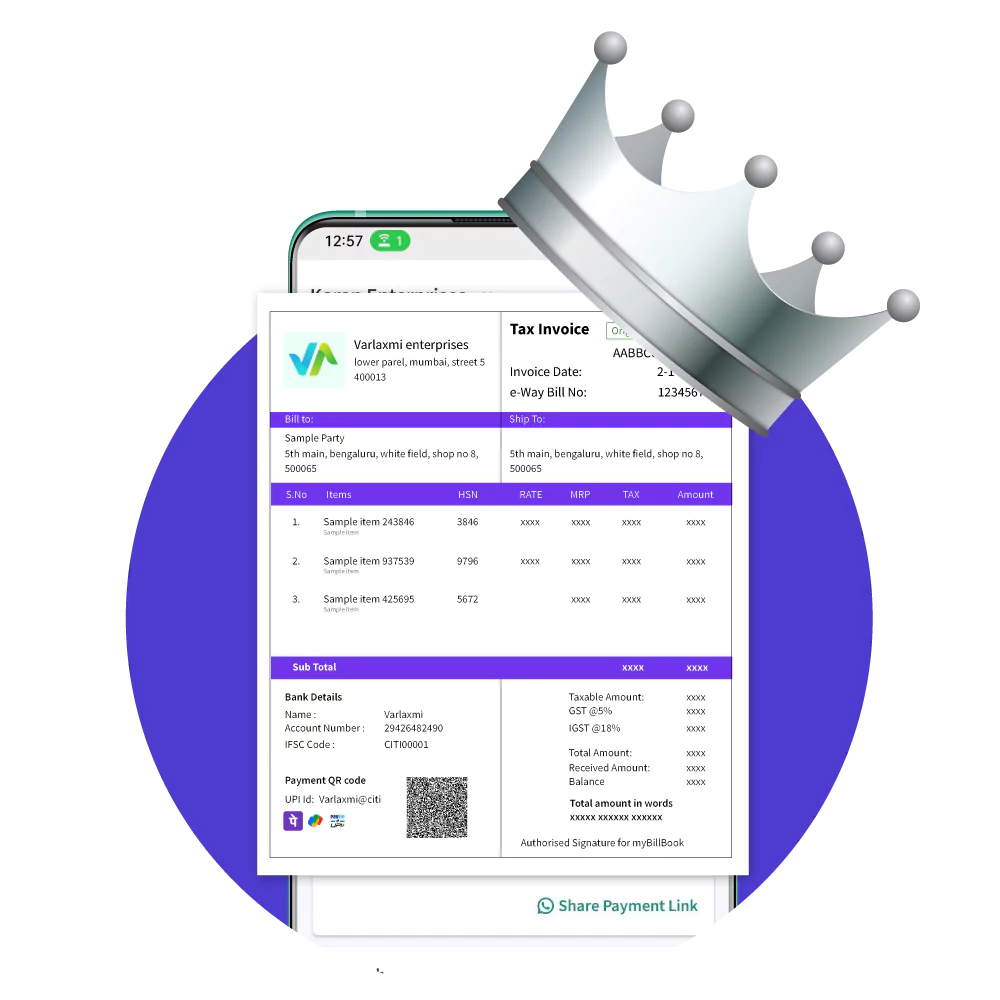


A GST bill format contains fields of the invoice particulars as required by the GST law. The details include the list of goods or services provided, the price, quantity, tax rate, and the total amount payable.
Businesses can create GST tax invoice formats using different tools, including Word, Excel, and PDF. However, Excel is a popular tool to generate GST-compliant invoices.
Here is a detailed guide about the GST bill format in Excel, how to create one, and how myBillBook helps you generate GST-compliant invoices in seconds.
The GST law mandates registered taxpayers to issue GST invoices upon making a sale. Besides allowing the seller to collect the payments, the GST invoice enables them to avail input tax credit under the new tax regime. Hence, most GST-registered business owners must follow the GST bill format to generate bills.
Ever wonder why a GST bill format in Excel is so important?
The Excel template of the GST bill can be easily customised to fit the specific needs of a business, allowing for the easy addition of necessary information.
It’s a simple yet powerful document that keeps track of all the transactions made by your business.
The GST bill Excel sheet can be shared and accessed by multiple users, making it easier for teams to collaborate on GST billing.
The most important aspect of a GST Invoice format in Excel is the accuracy and precision of the details included for the customer’s review. The below-mentioned information ensures easy readability and convenience for the customer.
It is important to ensure all the above details are accurate and precise for easy readability in a GST bill format. These details must be added before forwarding the invoice to the customer.
Steps to follow to create GST bill using MS-Excel
Step:1 – Open Microsoft Excel. Select ‘ File > New >Blank WorkBook ’
Step:2 – Remove the gridlines by clicking on the ‘ View’ tab and then unchecking ‘ Gridlines ’ in the ‘ Show ’ section.
Step:3 – Upload the company logo in the blank sheet by clicking on ‘Insert > Picture ’.
Step:4 – Click on the ‘ Header & Footer ’ tab and give the header for the sheet as ‘ Tax Invoice ’.
Step:5 – In the next cell, enter your company details, including company name, address, email ID and GSTIN.
Step:6 – In the next cell, create an ‘ Invoice To ’ field to enter customer details like name, company name, address, email ID and GSTIN/UN.
Step:7 – To the right of the ‘Invoice To’ section, create fields like Invoice No., Date, Due Date, Terms , etc.
Step:8 – Right below the ‘Invoice To’ section, create the ‘Goods or services ’ section to enter data, including name of the product/service, quantity, tax rate, discount, unit, total amount, etc., as per your business requirement.
Step:9 – At the bottom of the page, provide your bank details and other payment modes like UPI bar code, UPI ID, or UPI phone number.
You can also insert some excel formulas to auto-populate the cells when creating invoices. For instance, the ‘Date field’ can be auto-filled with the current day’s date using the formula =TODAY(). Similarly, you can use PRODUCT and SUM formulas to calculate the total price of the items and the total invoice amount.
MS-Excel is undoubtedly one of the best tools for calculations. For GST invoice generation, excel formulas help calculate the total price, tax amounts, discount calculations, etc. During the initial phases of the business, excel might help small and medium enterprises create invoices of their choice. However, once the business expands and when the billing and accounting requirements change, excel may not be a viable option.
Here are some of the limitations that excel poses for businesses.
Hence, generating GST invoices in excel is not viable if the businesses look for a comprehensive billing and accounting solution.
If you are looking for a GST Bill format in Excel, you would definitely need a tool to generate GST invoices. myBillBook is one such online platform that provides a complete billing and accounting solution besides just generating GST invoices.
Let us see how to generate GST – compliant invoices using myBillBook software.
myBillBook not only generates GST-compliant invoices but also makes tax filing easy. As the entire invoicing information is stored in the database, data retrieval is a matter of seconds. Further, as the billing software integrates with the accounting tool, inventory and cash flow management become a cakewalk. Business owners can evaluate the company’s performance by looking at the sales reports generated by the software at no additional cost.
If all these billing and accounting features come at a nominal cost, do you still think using excel to generate GST invoices is affordable and productive? With the changing billing and accounting needs of businesses, many tech-savvy invoicing and accounting tools have evolved. It’s time for the companies to upgrade their billing and bookkeeping practices to stay up to date in the present market.